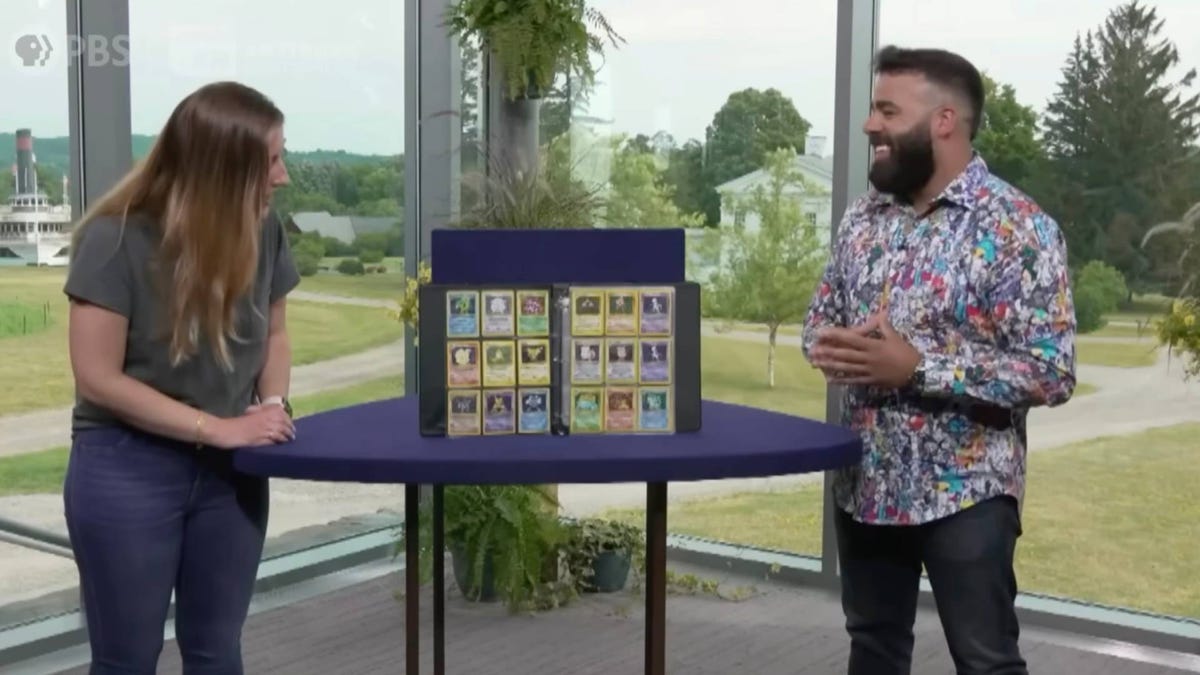[ad_1]

Recently, a guest on the popular TV series Antiques Roadshow brought on something quite different from the types of things folks usually have appraised by the show’s experts: a binder containing all 102 original, base-set Pokémon cards. What makes the segment so interesting is that appraiser Travis Landry takes it very seriously, and enthusiastically walks his audience through a ton of cool facts about just how rare some of these cards are. I was unsure how a video game-related item would be treated on the storied PBS program, but Landry was surprisingly attuned to the nuances of selling these cards.
Antiques Roadshow is a show where antiques appraisers travel to different places and evaluate locals’ possessions for cultural significance and monetary value. It’s a neat show that helps you understand how an object’s history is evaluated in monetary terms. Normally, people bring on things like oil paintings, sports memorabilia, and fine jewelry. While the show does appraise baseball cards from time to time, Pokémon cards feel like they belong in a different category altogether. Nevertheless, pop culture appraiser Travis Landry showed off his Pokémon knowledge to PBS viewers.
The owner’s mother purchased the full base set of cards, which also includes some duplicates, for her child in 1999. Back then, the entire binder cost her mom $35. “Like most 90s babies, I fell into the craze. We were playing with them on the school bus, trading them, and my mom bought this set online,” the owner says. “My mom thought I was being taken advantage of in trades, so she bought me this complete set to save until I got older.”
Landry then gives a basic rundown of the Pokémon card game’s 1990s origins before getting to the good stuff. These cards came from the original base set, and were printed in two variations. Some cards were printed with a “shadow border” framing the card art, while others were more rare “shadowless” cards. The shadowless copies are also distinguished by having their print dates printed twice on the bottom of the card—once in the middle of the card, and then again at the end. The difference in rarity meant that the borderless Mewtwo would fetch approximately $800 more than its common counterpart.
The appraiser acknowledged that potential buyers wouldn’t care about some TV appraiser saying what these cards are worth—real collectors want the cards graded by a third party company. But he estimated that the cards were in near-mint condition.
He told the guest that the Pokémon card market was extremely “volatile.” While her holographic Charizard would fetch $2,000 to $3,000 now, it would have been worth $5,000 to $8,000 last year, and, he said, could have sold for as much as $15,000 at the height of Poké-mania during the pandemic years. Still, the binder was an impressive collection that could fetch $5,000 to 10,000 by Landry’s conservative estimates. The owner was surprised, as her friends thought that the collection was only worth $50.
Landry sounded aghast. “Oh man, you need some new friends!”
[ad_2]
Source link
